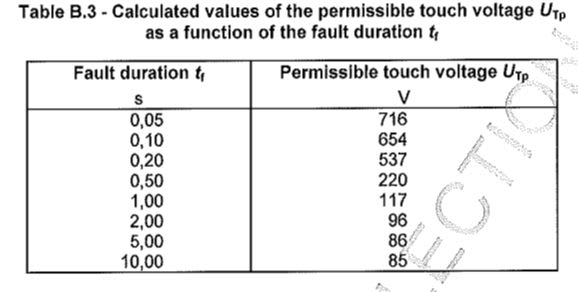Electrical1948
Electrical
Hi
Referring to thread238-305712.
Im trying to derive the permissable touch voltage curves in standard EN50522 without any success.
Can someone please share how to derive these curves? An ExCeL worksheet will be appreciated
Many Thanks
Referring to thread238-305712.
Im trying to derive the permissable touch voltage curves in standard EN50522 without any success.
Can someone please share how to derive these curves? An ExCeL worksheet will be appreciated
Many Thanks

